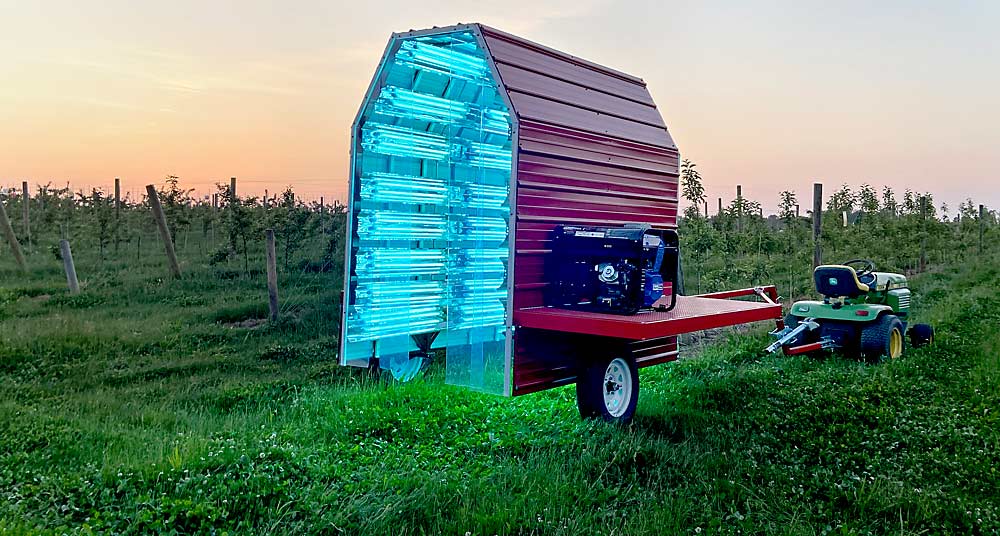
Applications of germicidal ultraviolet (UV-C) light have successfully managed diseases in strawberries and grapes, and they are starting to do the same in apples.
Two years of trials show that nighttime applications of UV-C light can control fire blight without damaging trees or fruit. More studies are coming, but plant pathologist Kerik Cox and a team of Cornell University researchers concluded that UV-C can be an effective alternative to fungicides and antibiotics.
The fire blight trials, conducted in research orchards in 2021 and 2022, were funded by the New York Apple Research and Development Program. Cox is seeking additional funding to study UV-C’s effects on apple scab and powdery mildew and to confirm it has no negative postharvest or fruit quality effects.
With help from Cornell senior research associate David Gadoury, Cox’s team built a device that can make UV-C applications in an orchard. It’s basically an arch on wheels, with the interior lined with an array of light bulbs that emit UV-C wavelengths. The lights are backed by highly polished aluminum reflectors, and flexible curtains coated with a UV-reflective substance hang from the front and back. The bulbs are powered by a generator, and the whole apparatus can be towed by a small tractor.
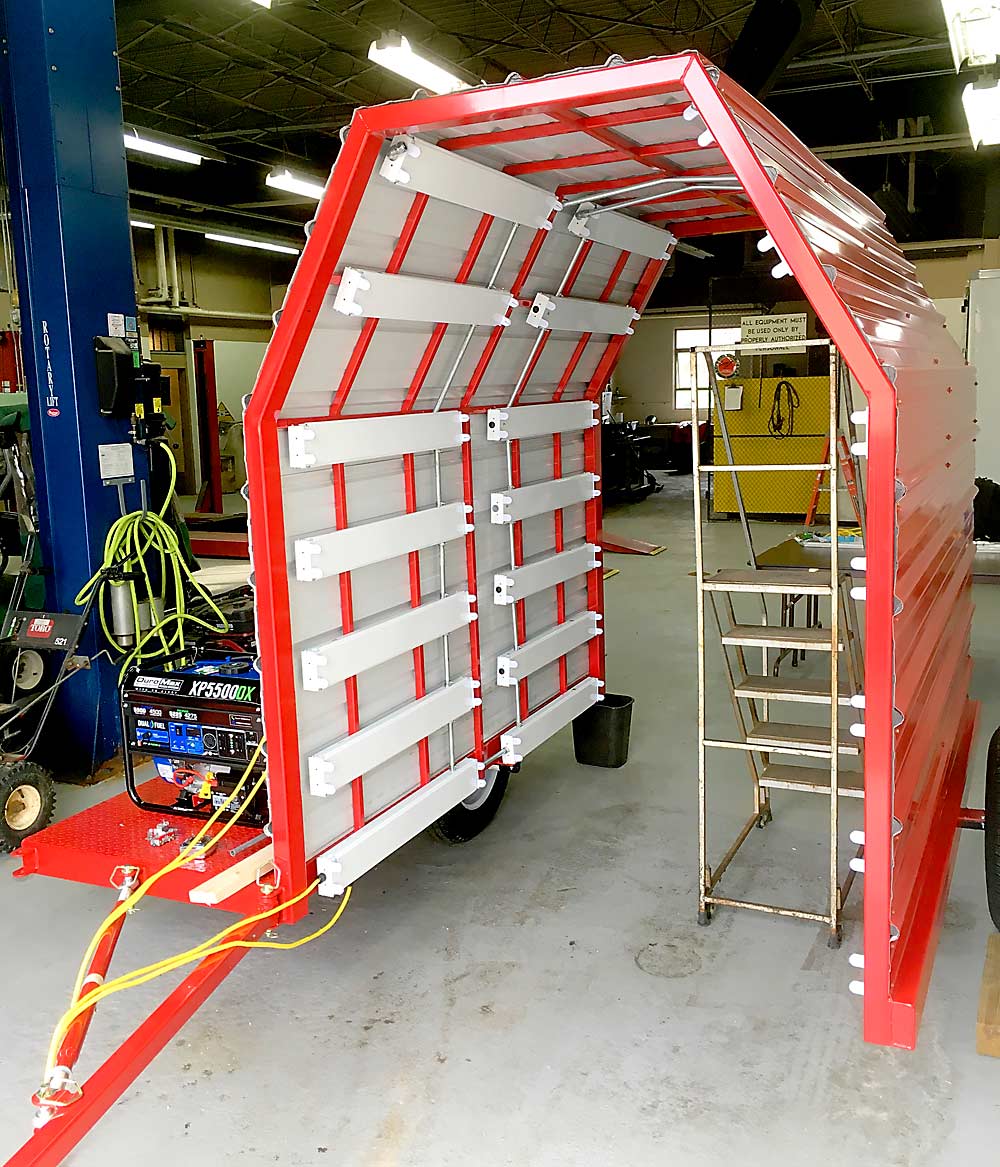
As the unit is pulled over a row of trees or vines, the bulbs and reflective surfaces create almost a “fog” of light particles that reaches deep within complex vine and tree canopies. Gadoury’s team has built three of these towable light arrays for about $12,000 apiece, he said.
It’s not a commercial product yet — and may not be, as the core technology is unpatentable and therefore less attractive to manufacturers — but the Cornell researchers are developing a production manual that anyone can use to make their own unit.
Long used in hospitals, UV-C light disrupts DNA in microorganisms, thus killing bacteria and fungi on surfaces. Gadoury began working with UV-C technology in 1991, first on grapevines. In early trials, he learned that daytime UV-C applications in grapes could effectively control powdery mildew, but only in high doses that ended up damaging vines. So the technique languished for years.
But about a decade ago, Aruppillai Suthaparan, then a graduate student at the Norwegian University of Life Sciences and now a member of the faculty, who worked with Gadoury, discovered that nighttime applications circumvent microorganisms’ DNA repair mechanisms, which are activated by sunlight. If UV-C light hits the organism when its repair mechanism is turned off, the damage can’t be fixed. Hence, night application allows for the use of a much lower dose of UV-C light that won’t harm the host plant.
“We found the sweet spot,” Gadoury said.
Once that breakthrough was achieved, UV-C light found uses in multiple crops, including greenhouse strawberries. The technology is remarkably effective against a diverse group of pathogens, and even some insect pests. It’s now used to combat mites in greenhouse strawberry production in the Netherlands, Gadoury said.
UV-C applications offer a number of benefits. They don’t leave chemicals or residues, don’t require re-entry intervals and have shown no negative effects on fruit quality, Cox said.
Gadoury said there are no negative effects on wine quality, either.
To counteract the sun’s effects, a daytime UV-C application would require about four to 10 times the dose required at night. Nighttime applications also don’t hurt bees and other beneficial insects because they’re not active.
Nighttime applications require operating a tractor at night, one of the potential drawbacks. Gadoury said the most feasible option in the near future is autonomous tractors pulling the light arrays.
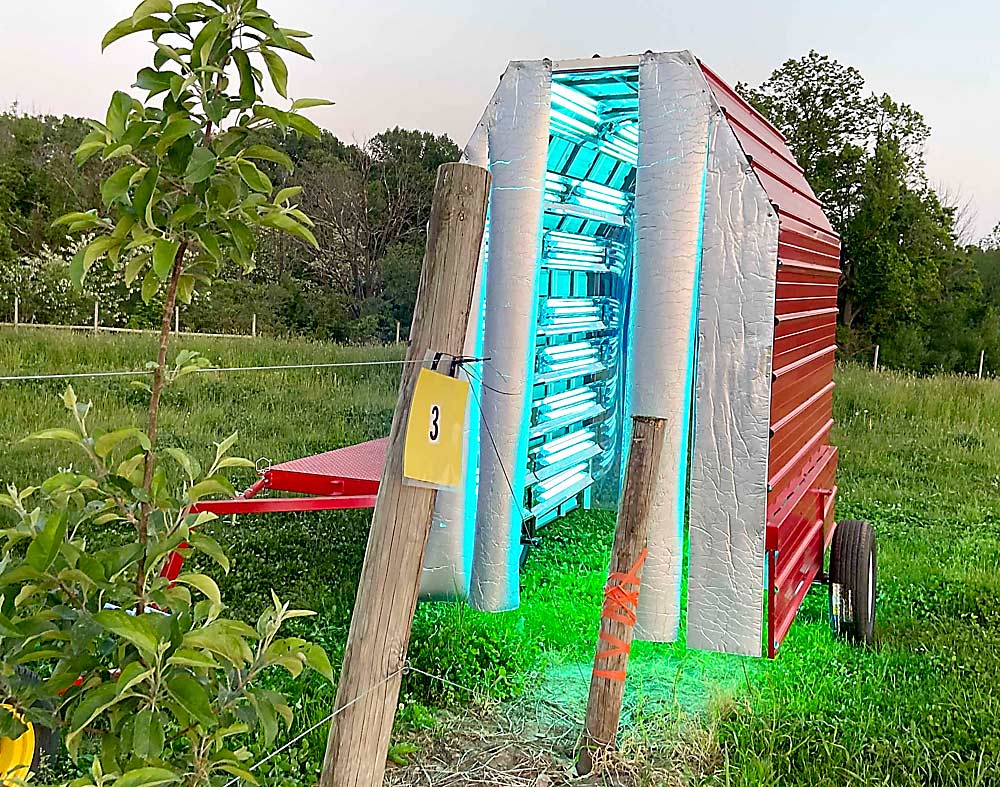
Washington State University viticulture extension specialist Michelle Moyer has trialed UV-C applications for powdery mildew control in grapes. She said the technique requires regional evaluation, as inland Pacific Northwest vineyards tend to have bigger, more complex canopies than East Coast wine grape vineyards. The greater complexity prevents sunburn on fruit but makes it harder for light to penetrate the fruit zone.
Washington grape growers who want to adopt UV-C light as their sole powdery mildew-fighting tool would have to focus on more intensive canopy management. They’d also have to make UV-C applications at least once a week — whereas they make most fungicide applications every two weeks. With current equipment, UV-C is probably better suited for smaller growers and growers seeking to reduce their chemical inputs, Moyer said.
“It’s not a silver bullet,” Gadoury said. “It won’t eliminate spraying in all crops, although it may do so in some. In several crops it can take the most troublesome pathogens out of the picture and greatly improve management options for what remains. That’s certainly the case in grape and apple production in the Eastern U.S.”
—by Matt Milkovich

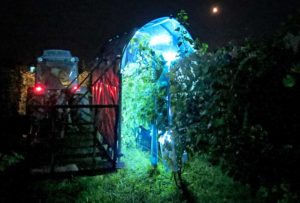
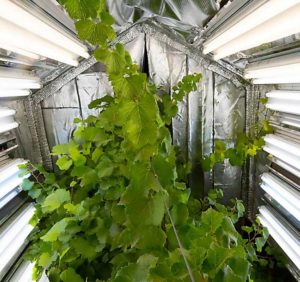





Leave A Comment